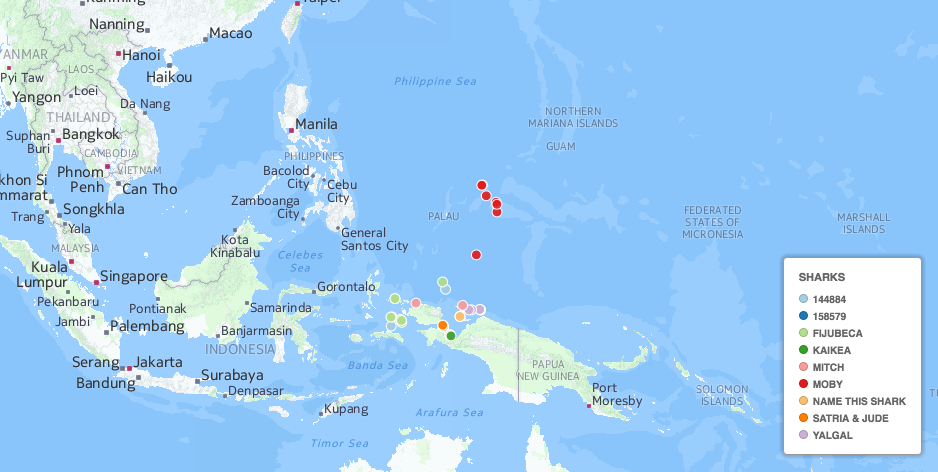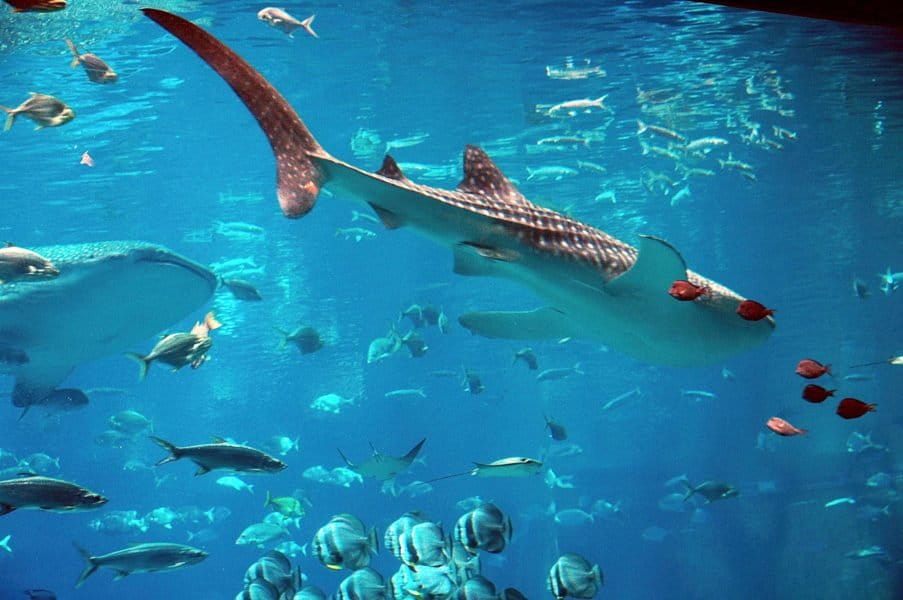- Annually, approximately 100 million sharks are killed by commercial fisheries.
- Shark Week is the longest running cable TV program and has aired every summer since 1988; educating millions of viewers on the intricate and elusive nature of sharks.
- In celebration and support of Shark Week 2016, we are excited to highlight five different organizations and technologies that are being used to protect shark species.
Annually, approximately 100 million sharks are killed by commercial fisheries. Coupled with climate change and a decrease of food supply from overfishing, some shark populations are teetering on the edge of extinction.
Bringing sharks into mainstream media, the brainchild of the Discovery Channel and the longest running cable TV program, Shark Week has aired every summer since 1988; educating millions of viewers on the intricate and elusive nature of sharks.
While we know that sharks, as top predators, play an important role in maintaining ocean and global health, scientists are still hot on their heels fins to learn more about their behavior and their vital role in ecosystem balance.
In celebration and support of Shark Week 2016, we are excited to highlight five different organizations and technologies that are helping to protect shark species.
1. OCEARCH: Using tracking and non-tracking data, OCEARCH has created an open source database providing information on mature oceanic apex predators. Working together, fishermen and scientists bring sharks to the surface for 15 minutes for scientists to take blood and parasite samples, muscle biopsies, and body measurements, and to outfit the sharks with trackers for data collection.
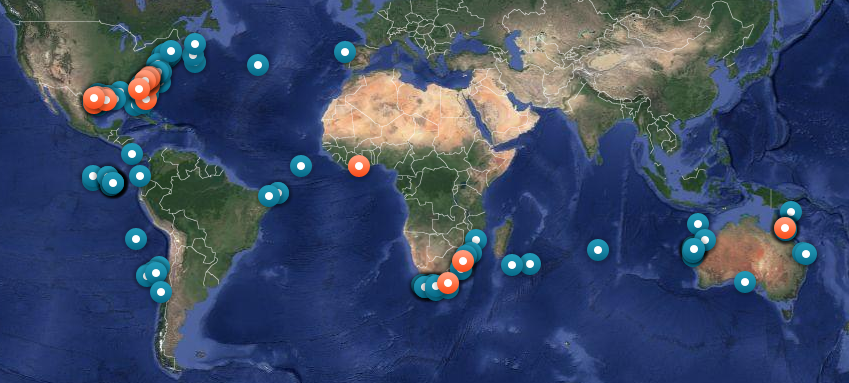
A map shows the location of tagged sharks. Photo credit: OCEARCH.
2. Clever Buoy – For the safety of sharks and surfers, Clever Buoy is being deployed at the popular J-Bay Open surf competition in South Africa. Clever Buoy is marketed as a non-invasive technology that uses sonar to detect a sharks distinct swimming movement. When the buoy detects a shark it sends a signal to a satellite that is transmitted to the mobile device of lifeguards, allowing lifeguards to alert surfers of the shark and prevent both injury and public outrage.
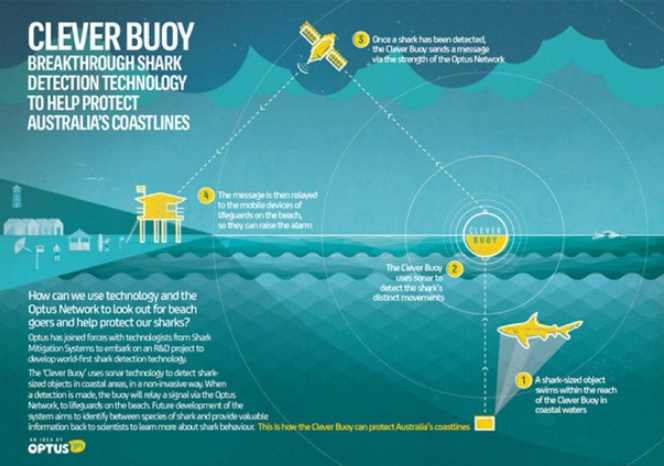
3. FinPrint: Using baited remote underwater video (BRUV), the FinPrint project is collecting information on elasmobranchs (sharks, rays, and skates) at over 400 reef locations to better understand their influence on coral reef ecosystems and how humans are impacting these species. Funded by Microsoft co-founder, Paul G. Allen, FinPrint is the largest survey ever conducted on the world’s reef-associated sharks and rays. An open-access database houses survey data and analysis on species, population trends, and habitats. Additionally, any animal that approaches the BRUV is documented, giving scientists even more information on marine species living in the 400 reef areas.
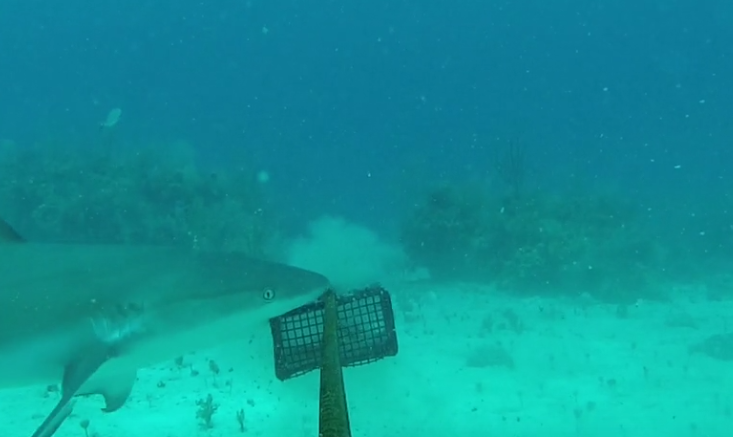
4. Basking Shark Satellite Tagging Project: Researchers from Scottish Natural Heritage (SNH) and the University of Exeter (UoE) are investigating the sharks’ distribution and movement behaviors through the Basking Shark Satellite Tagging Project. Between 2012 and 2014, the scientists tracked 61 basking sharks in the waters between Isle of Skye and the Isle of Mull to assess whether the area should be part of Scotland’s Nature Conservation Marine Protected Areas (MPAs) Programme. They followed the sharks’ movements using three tracking systems to learn how basking sharks use the waters off the west coast of Scotland, how long they inhabit these waters, and what migration patterns the sharks follow once their leave the area.
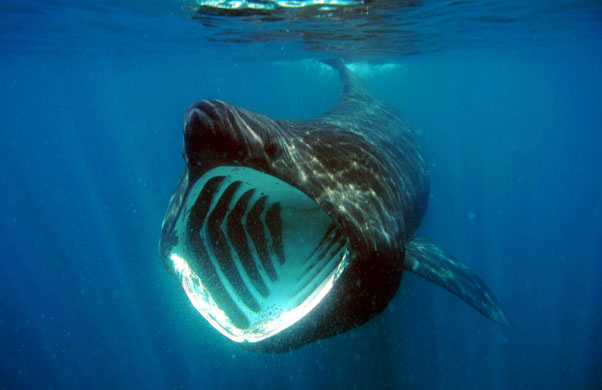
5. Tracking Whale Sharks: In 2015, Conservation International partnered with Indonesian fisherman to begin the first-ever tagging of whale sharks. Previously thought to be too large to catch and tag, whale sharks can be inadvertently caught in fishermen’s nets, granting fishermen the opportunity to dive into the water and attach a tag to the sharks. Transmitters track the sharks and are providing scientists with valuable data and newly discovered information on whale sharks. You can follow the sharks movements in “real-time,” though there is a slight delay in updating locations to prevent poaching of the whale sharks.
